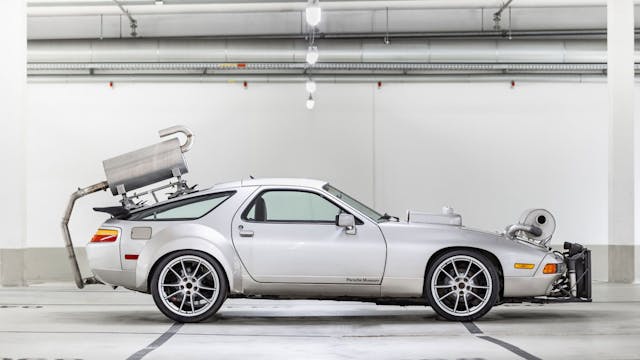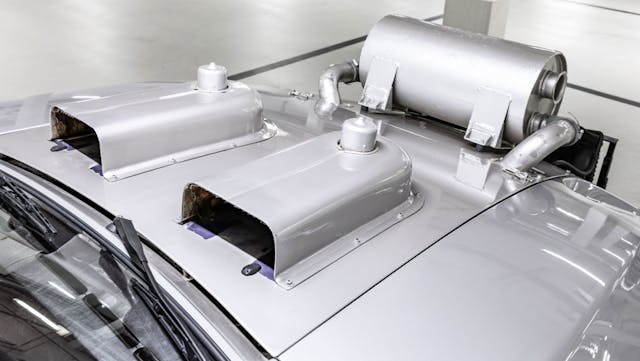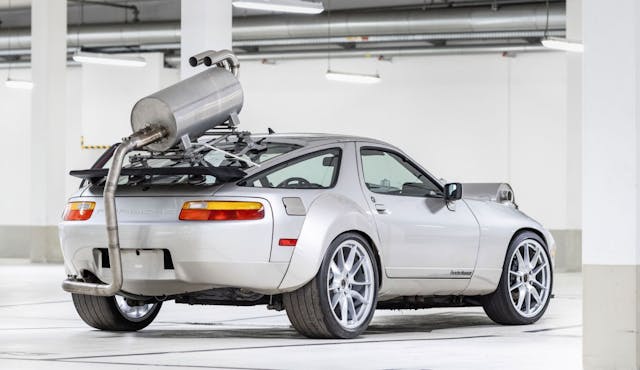 Porsche">
Porsche">Deep within the hallowed halls of the Porsche Museum, a unique and unsung hero of automotive engineering now takes its well-earned place—a specially modified Porsche 928 that served as a crucial testbed for noise regulations over a span of more than three decades.
This one-of-a-kind manual coupe wasn’t just any vehicle; its primary mission was to help Porsche meet stringent noise measurements, leveraging the low-end grunt of its formidable 5.4-liter V-8 engine. As engineer Harald Mann elucidates, the design focus was entirely on functionality, not aesthetics or interior space. “Whether the engine was in the front or the rear, or how much interior space was available was irrelevant,” Mann explains. “What was crucial was having a lot of power at lower engine speeds.”

A pivotal aspect of the noise testing was isolating each sound source, whether it emanated from the engine or the tires. “The mechanical noise of the engine and the tires is, in fact, hard to influence,” says Mann. “Ultimately, it’s a balancing act: if the engine and gearbox are particularly quiet, then things like the exhaust can afford to be a tad louder. Conversely, if tire noise is excessive, then other noise elements, like the intake, need to be quieter.”
To achieve this acoustic nirvana, engineers wrapped the car in cotton wool, moved the radiator to the bumper front, removed the fan, and installed a giant intake silencer. Enormous exhaust silencers were attached to the rear window, and the underbody received extensive insulation—a setup that conjures images of George Miller's dystopian Mad Max universe.



The car initially didn’t tear down Fury Road but was tested rigorously on a section of the skidpan at Weissach. It was later run on a specially designed track section to gauge its sound levels accurately. At its zenith, this 928 clocked in at a whispering 63 dB(A)—a staggering feat given the legal limit of 74 dB(A) at that time, making it the quietest 928 ever produced.
Pirelli also saw potential in this automotive marvel, utilizing it to test new tire compounds and tread patterns. This meant the 928 had to be fitted with wider arches to accommodate a variety of wheels and tires, including the low-profile rubber seen on the more recent 991-generation 911.
Despite its age, this blitzed battlewagon was operationally capable until its retirement. As Mann affirms, “It could still do the job today.”
